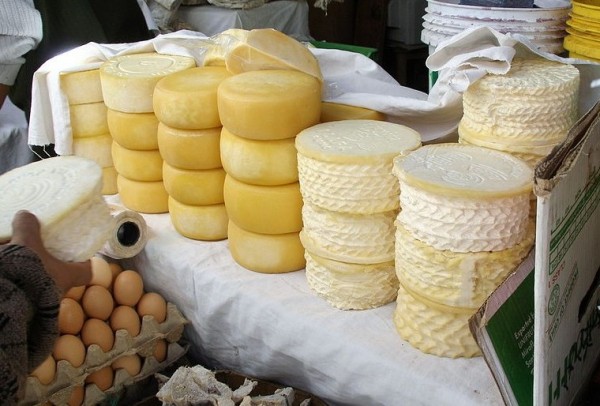The Republic of the Congo—distinct from its neighbor, the Democratic Republic of the Congo—is known for its vibrant cultures, dense rainforests, and rich culinary traditions shaped by cassava, plantains, smoked fish, peanuts, and tropical produce. Yet one food rarely associated with Congolese cuisine is cheese. Historically, dairy was not a major part of the Congolese diet due to pastoral limitations, climate challenges, and limited refrigeration.
However, the story is changing. As urban populations grow, food culture modernizes, and small-scale farmers explore diversification, the Republic of the Congo is experiencing a quiet rise in artisanal cheese making. Though still emerging and far from the cheese traditions found in Europe or North Africa, Congolese craft cheese reflects innovation, local adaptation, and a growing interest in dairy-based foods.
This in-depth guide explores everything you need to know about artisanal cheese in the Republic of the Congo—its history, challenges, varieties, modern developments, imported influences, and the exciting future of cheesemaking in the region.
1. Why the Republic of the Congo Has Little Traditional Cheese
For most of its history, the Republic of the Congo did not produce cheese, largely because:
1.1 Climate Constraints
The country has a humid equatorial climate—high temperatures, high humidity—which makes traditional cheesemaking and aging extremely difficult without modern cooling.
1.2 Limited Dairy Tradition
Unlike parts of East Africa (Kenya, Ethiopia) or the Maghreb (Morocco, Algeria), Central African cultures relied more on:
-
Cassava
-
Yams
-
Fish
-
Forest produce
-
Palm oil
-
Plantains
Milk was not historically common in the local diet.
1.3 Low Cattle Populations
Livestock numbers have always been modest, and pastoral systems faced:
-
Tsetse fly challenges
-
Low-yield breeds
-
Limited veterinary infrastructure
These factors meant dairy farming never expanded enough to support complex dairy processing like cheese.
2. Modern Change: The Rise of Artisanal Congolese Cheese

Despite lacking historical cheese traditions, the Republic of the Congo is seeing modern growth in small-scale cheese production driven by:
2.1 Urban Demand
Cities like Brazzaville and Pointe-Noire have rising middle-class populations interested in:
-
Sandwiches
-
Burgers
-
Pizza
-
Salads
-
Western-style breakfast dishes
Cheese is increasingly featured on supermarket shelves and restaurant menus.
2.2 Small Dairies and Farms
A few dairy farms are experimenting with:
-
Fresh cheese
-
Yogurt
-
Farmer’s cheese
-
Soft curds
These cheeses are small-batch, local, and sometimes handcrafted—the foundation for a future artisanal cheese movement.
2.3 Culinary Tourism
Hotels, expat communities, and restaurants want locally produced cheeses to reduce reliance on expensive imports.
3. Current Types of Cheese Produced in the Republic of the Congo
While limited in number, several artisanal or locally made cheeses now exist. They are typically fresh, quick-to-produce cheeses that do not require long aging.
3.1 Fresh Farmer Cheese (Fromage Fermier)
A mild, crumbly cheese similar to:
-
Paneer
-
Queso fresco
-
Akawi
Often used in:
-
Breakfast plates
-
Simple salads
-
Sandwich fillings
It is usually made from cow’s milk and has a clean, milky flavor.
3.2 Soft Curd Cheese
This includes:
-
Labneh-style strained yogurt
-
Spreadable cream-cheese-like products
These are popular because they require minimal aging and tolerate tropical climates well.
3.3 Cheese Balls (Local Fresh Curds)
Some small producers sell hand-shaped cheese balls preserved in:
-
Light brine
-
Seasoned oils
-
Herb mixtures
These resemble Middle Eastern labneh balls or fresh chèvre.
3.4 Goat’s Milk Cheese (Emerging)
Goats are more climate-adapted than cows, so goat cheese is becoming more common.
Typical varieties include:
-
Soft fresh chèvre
-
Mild brined goat cheese
-
Spreadable goat curd
A few local farms near Brazzaville have started producing these products for restaurants.
3.5 Cottage Cheese (Localized Version)
A small number of dairies create cottage cheese-style products for use in:
-
Fitness diets
-
Breakfast bowls
This product is becoming popular among health-conscious consumers.
4. Imported Cheese: A Major Influence
Since local production is still young, the Republic of the Congo relies heavily on imported cheese, especially from:
-
France
-
Belgium
-
The Netherlands
-
South Africa
-
Morocco
These imports influence local cheese preferences.
Most Common Imported Cheeses
-
Gouda
-
Edam
-
Brie
-
Camembert
-
Mozzarella
-
Cheddar
-
Processed cheese slices
-
Parmesan (often industrial versions)
Restaurants frequently use imported mozzarella, cheddar, and Emmental for pizzas and sandwiches.
5. Flavor Profile of Congolese Artisanal Cheese
Local artisanal cheeses tend to share several characteristics:
Taste
-
Mild
-
Slightly tangy
-
Fresh and milky
-
Soft in flavor due to short aging
Texture
-
Soft to semi-firm
-
Moist and delicate
-
Less salty than Mediterranean brined cheeses
Why So Mild?
Because fresh cheeses dominate, they do not undergo the flavor concentration that aging provides.
6. How Congolese Cheese Is Used in Local Cuisine
Cheese is not traditionally part of Congolese cooking, but fusion dishes are becoming common.
6.1 Breakfast Dishes
-
Bread and fresh cheese
-
Omelets with cheese
-
Toasted sandwiches
6.2 Modern Lunch Plates
-
Chicken or fish topped with soft cheese
-
Pasta with mild cheese
-
Cheese salads with tomatoes and cucumbers
6.3 Pizzas and Burgers
Mozzarella and cheddar—imported or locally substituted—are widely used in:
-
Pizzerias
-
Street-food stalls
-
Fast-food restaurants
6.4 Snacks and Appetizers
Local cheese balls or soft curds are served with:
-
Herbs
-
Olive oil
-
Crackers
-
Smoked fish (fusion pairing)
7. Nutrition and Health Aspects
Fresh artisanal cheese in the Republic of the Congo provides:
-
High-quality protein
-
Calcium
-
Healthy fats
-
Probiotics (in fermented varieties)
Since many local cheeses are lightly salted, they are suitable for people avoiding high-sodium diets.
Goat cheese is especially valued for:
-
Easier digestibility
-
Lower lactose levels
-
Higher nutrient absorption
8. Challenges Facing Congolese Cheesemakers
8.1 Climate Issues
High humidity interferes with classic aging.
8.2 Refrigeration Dependence
Artisanal producers must invest in constant cooling, increasing costs.
8.3 Limited Dairy Supply
Milk production is not high enough to support large-scale cheesemaking.
8.4 Consumer Education
As cheese is not traditional, consumers may be unfamiliar with artisan distinctions.
8.5 Import Competition
Imported cheese is often seen as premium, making it harder for local producers to compete.
9. The Future of Artisanal Cheese in the Republic of the Congo
Despite challenges, the future is promising. Several trends point to growth:
9.1 Farm-to-Table Movement
Urban restaurants want local dairy suppliers to reduce costs and support sustainability.
9.2 Goat Dairy Expansion
Goats thrive in equatorial climates, offering potential for high-quality goat cheese.
9.3 Culinary Innovation
Chefs increasingly experiment with:
-
Herb-infused cheeses
-
Smoked fresh cheese
-
Congolese-spiced cheese spreads
9.4 Young Entrepreneurs
Small dairies and local food startups are introducing modern dairy techniques.
9.5 Tourism and Hotels
High-end hotels prefer local cheese options for breakfast buffets and fusion menus.
These changes suggest the Republic of the Congo may soon produce unique cheeses that express its environment and culture—just as other tropical regions like Brazil and India have done.
Conclusion: A Growing Cheese Identity in the Republic of the Congo
While the Republic of the Congo is not historically a cheesemaking nation, its emerging artisanal cheese scene represents creativity, adaptation, and modern culinary evolution. From fresh cow-milk cheeses to early goat’s milk experiments, local cheesemakers are laying the foundation for what could become a distinctive dairy tradition.
As demand grows and techniques improve, the country may eventually develop its own signature cheese, shaped not by European models but by Congolese tastes, climates, and culture.
For now, artisanal cheese remains a small yet exciting part of the nation’s food landscape—one that is sure to expand in the coming years.



